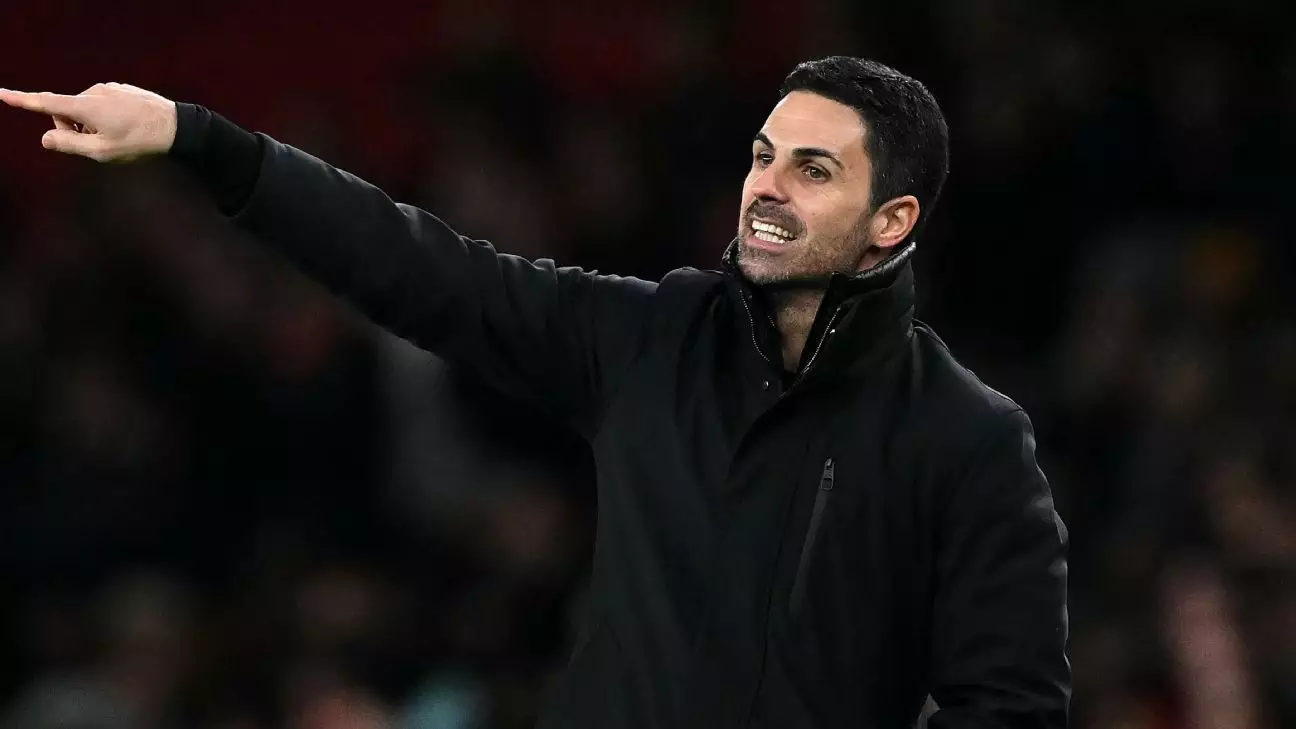In a recent semifinal against Newcastle United, Arsenal faced a discouraging 2-0 defeat—an outcome that left Mikel Arteta reconsidering various factors, including the specific ball used in the competition. Arteta’s comments regarding the Carabao Cup ball shed light on the unique challenges posed by its use, particularly when juxtaposed with the standard NFL ball. This transition, albeit subtle, can significantly affect how teams execute their strategies and manage their chances on the pitch.
The Gunners notoriously squandered numerous opportunities during this match, achieving an expected goals (xG) figure of 3.12—a remarkable statistic that highlights their offensive potential despite the cold reality of their scoreless result. This discrepancy raises essential questions about how teams prepare to adapt to varying equipment and conditions, a factor that may appear trivial but can hold substantial ramifications for their psychological and tactical approaches.
Arteta’s insights extend beyond mere technicalities; they underscore a prevailing psychological challenge faced by players when chances are missed. He emphasized the importance of adapting to the ball’s unique characteristics, noting that the increase in altitude and the ball’s propensity to soar can disrupt players’ accuracy and confidence. By acknowledging the difficult transition, Arteta is taking a proactive stance, aiming to mitigate the mental strain that could arise from failing to capitalize on scoring chances, which is vital for a team aspiring for success in the cup.
The Arsenal manager’s ethos is to transform challenges into learning opportunities. He remarked, “It is about the next game,” underscoring the necessity to focus on future endeavors rather than dwell on past setbacks. This forward-thinking mentality is crucial for athletes who must foster resilience in the face of adversity.
Interestingly, the concerns raised aren’t new within the realm of professional football. Pep Guardiola, while at Manchester City, expressed similar frustrations with competition-specific balls, observing their divergence from standard models. His remarks back in 2017 about the Mitre ball echo Arteta’s current sentiments regarding the Carabao Cup ball, as both coaches needed to address the implications of unfamiliar equipment on their teams’ playing styles.
The English Football League’s (EFL) insistence on uniformity in ball specifications is essential for maintaining fairness across competitions. However, the practical realities of usage, such as individual player adjustments and teams’ familiarity, come to the forefront. If players are required to recalibrate their performance with variations under pressure, can adaptation alone yield success? Or should teams reassess their tactics to better align with the playing equipment at hand?
Mikel Arteta’s reflections not only emphasize Arsenal’s pressing need for adaptation but also serve as a broader commentary on the importance of preparedness in professional sports. With the return leg of the semifinal on the horizon, Arsenal faces the challenge of mastering the new ball dynamics while maintaining mental fortitude. It’s an urgent reminder that every detail counts in competitive sports—whether it be the type of ball or the players’ psychological readiness—and teams must embrace such intricacies as pivotal elements of their strategy for success.

